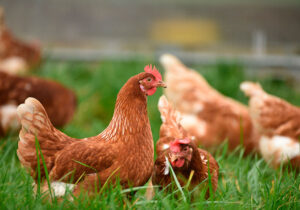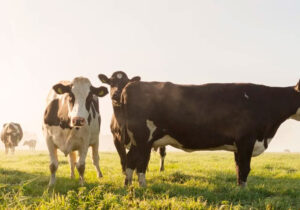
Factors Affecting the Prevention of Metabolic Diseases in Dairy Cows
- زمان تقریبی مطالعه: 4 دقیقه

Most veterinary care for sick cows is needed in the first three weeks after calving.
Cows that show signs of illness around the time of calving tend to be more susceptible to other diseases as well. If we can prevent one disease—such as milk fever—we automatically reduce the risk of ketosis and mastitis in the herd.
If we can successfully prepare the cow for the stress of calving and the start of lactation by focusing on the following three key points, we can prevent 90% of the problems seen in sick cows.
Prevention:
- Preparing the rumen to handle high-energy diets to meet the cow’s energy demands during lactation:
- Stimulating the growth of beneficial bacterial strains in the rumen.
- Stimulating the growth of the rumen wall to maximize nutrient absorption.
How do we do this?
- Add grains to the cow’s diet for at least three weeks before calving, especially for heifers who need to be fed this diet for five weeks. The protein content of the transition period diet should be 16%.
A – In herds fed with a TMR (Total Mixed Ration), feed a diet with 0.71 to 0.73 Mcal NEl/lb of energy for three weeks, and for heifers, at least five weeks.
B – In herds where forages and concentrates are fed separately, start adding grain four weeks before calving, and gradually increase the amount over two weeks so that in the last two weeks before calving, cows consume 0.75 to 1% of their body weight in concentrate.
- If corn silage is the primary forage, this amount can be reduced.
- Always provide forage before concentrate.
Maximize feed intake by drying off cows at a Body Condition Score (BCS) of 3.5. A cow with a BCS above 3.75 is considered over-conditioned. Decreased feed intake at calving leads to fatty liver and ketosis.
Final outcome:
Less ketosis, less displaced abomasum, less rumen acidosis, and less lameness—resulting in lower incidence of laminitis in early lactation.
- Preventing a severe drop in blood calcium concentration at calving:
As a large amount of calcium is diverted into colostrum and milk, the cow’s blood calcium levels can drop significantly. Mild cases cause reduced feed intake and muscle weakness, which in turn lead to retained placenta, displaced abomasum, and environmental mastitis (especially because the teat sphincter doesn’t close properly after milking).
How do we do this?
- Control dietary cation-anion balance (DCAB):
Milk fever is typically caused by high potassium in the diet (and sometimes high sodium, particularly in heavily irrigated areas of North America). The effects of potassium can be partially neutralized by adding anionic salts like calcium chloride, ammonium chloride, or magnesium sulfate. - Provide adequate magnesium:
Magnesium deficiency impairs the hormonal response that helps maintain blood calcium. I recommend higher magnesium levels than current NRC guidelines.
A good mineral profile for transition cow diets (3–4 weeks before calving):
- Calcium: 1 – 1.2%
- Phosphorus: 0.4 – 0.5%
- Magnesium: 0.4%
- Sodium: As close to 0.1% as possible
- Potassium: As close to 0.7% as possible (most diets will work if potassium is reduced to 1.5–1.8%)
- Sulfur: 0.3 – 0.4%
- Chloride: Sufficient to keep urine pH between 6–6.8 for Holsteins and 5.8–6.5 for Jerseys
My current approach:
I formulate the diet using forages with the lowest possible potassium content that are still reasonably digestible. Corn silage is excellent. Beet pulp (without molasses), distillers’ grains, fermented barley mash, and corn gluten can also be used.
First-cutting alfalfa typically has more potassium than later cuttings grown in dry conditions. Do not rely on potassium levels reported by infrared forage analysis!
Then I add magnesium sulfate or magnesium chloride to bring magnesium levels to 0.4%. If needed, I add dicalcium phosphate to bring phosphorus to 0.45% and calcium chloride to raise chloride to 0.55%.
Calcium carbonate can be added to bring calcium to 1%. In some cases, a small amount of calcium propionate (113 g/day) may be used to help increase dietary calcium while also supplying propionate, which the cow converts to glucose.
(The issue: Cost)
That’s where I start. If urine pH isn’t low enough, I increase calcium chloride in the diet. Add the minimum effective amount, as anionic salts generally reduce feed palatability and carry the risk of decreased intake.
Looking ahead:
Hydrochloric acid may become available as a cheap and palatable source of anions for preventing milk fever. If so, I would use it instead of calcium chloride. Calcium carbonate would still likely be needed to bring calcium up to 1%. Some calcium can also be supplied by calcium propionate.


